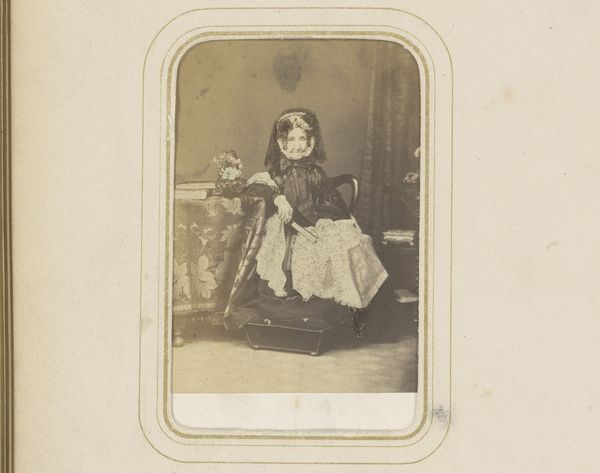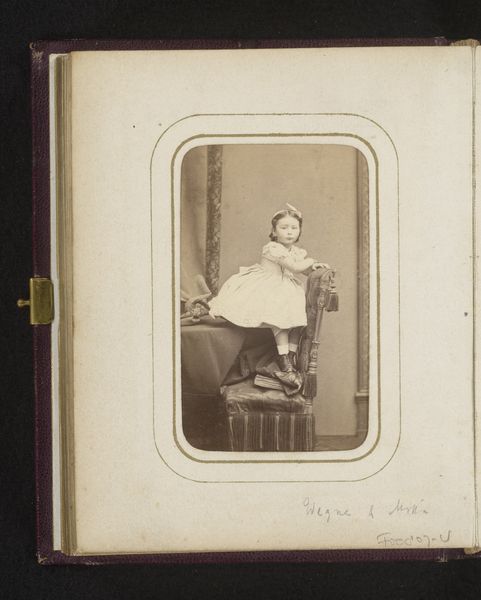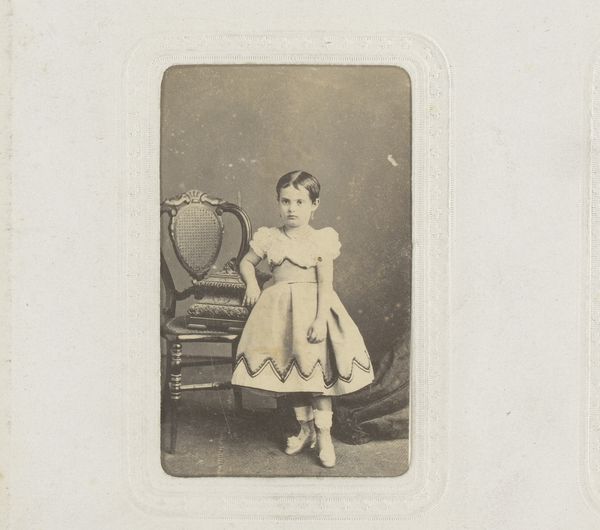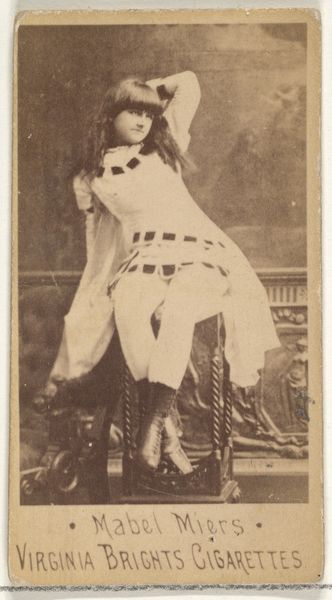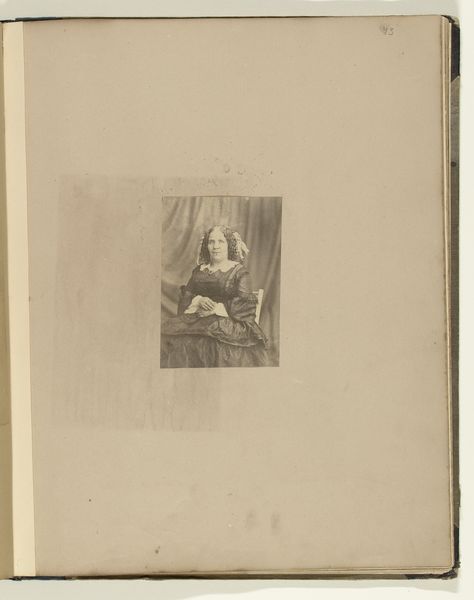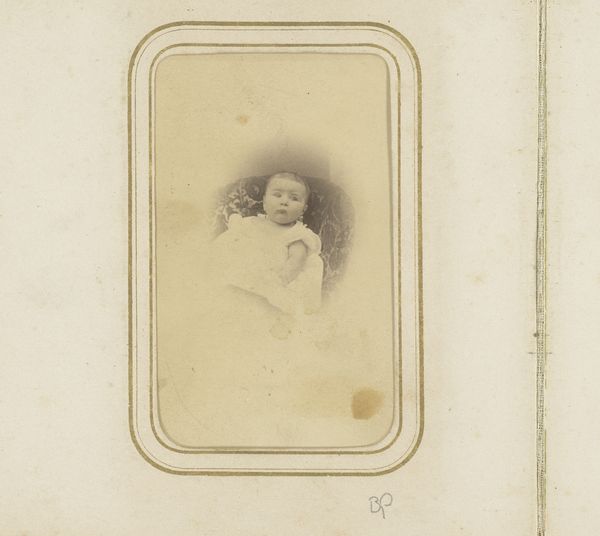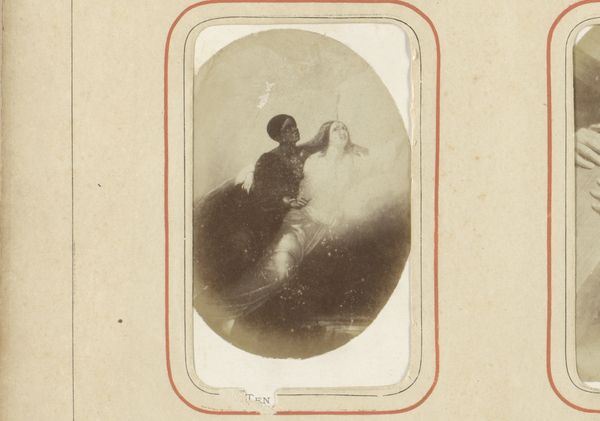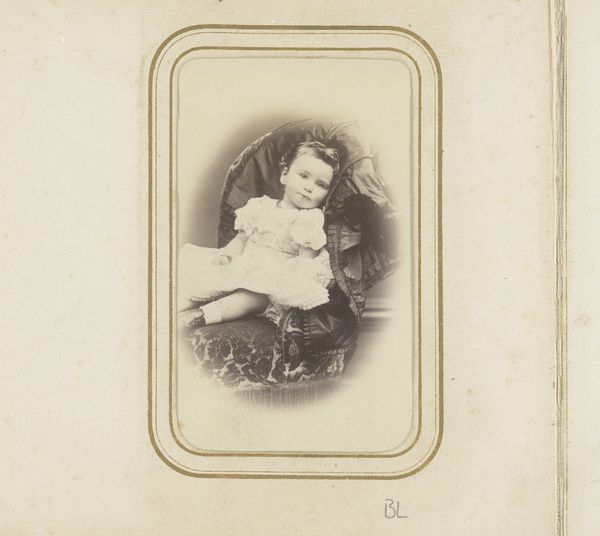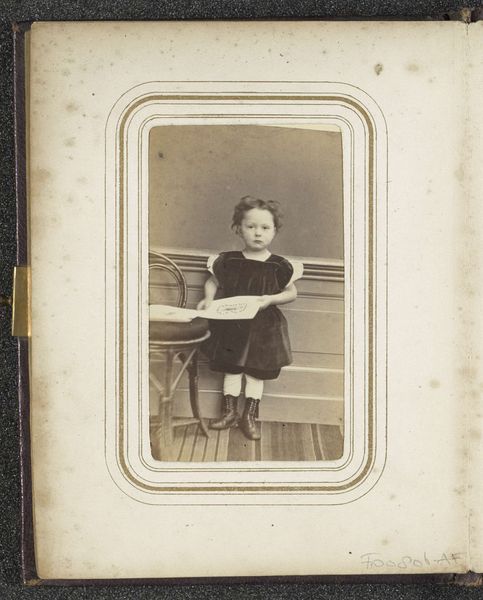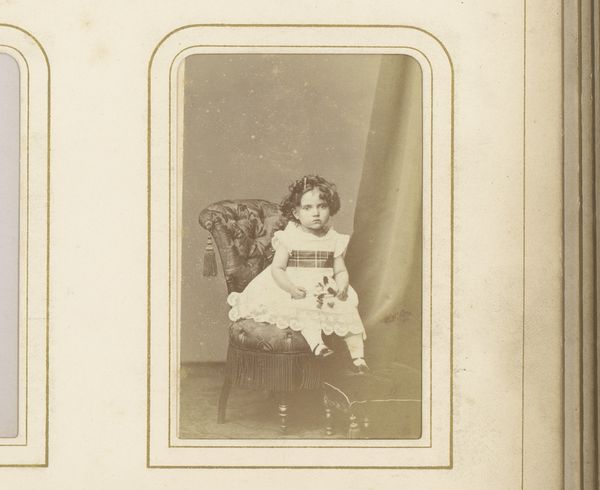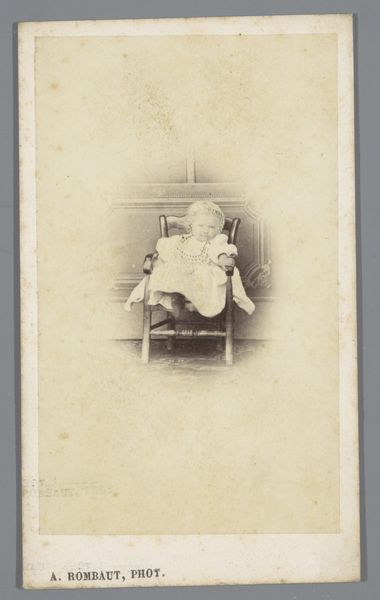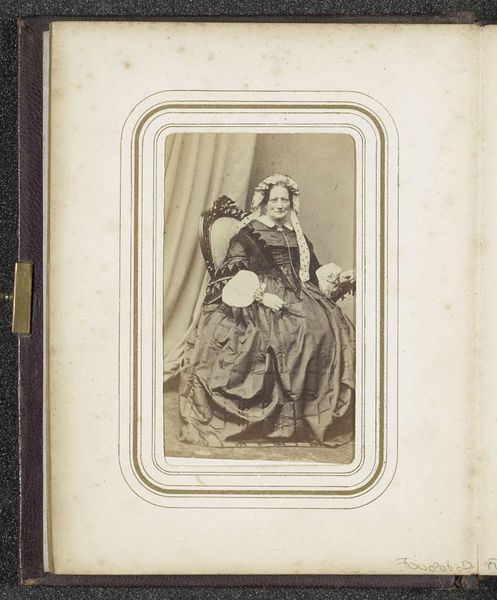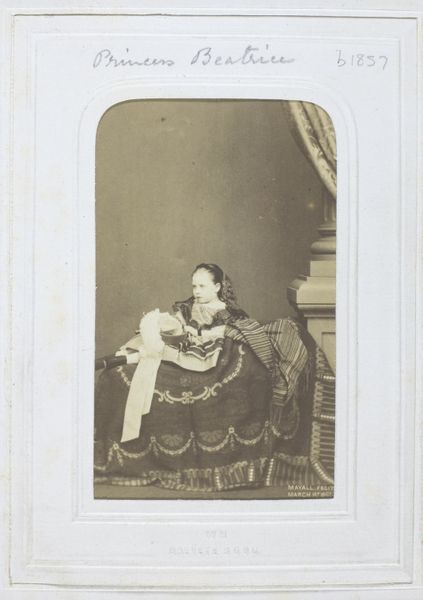
Dimensions: height 83 mm, width 51 mm
Copyright: Rijks Museum: Open Domain
Editor: This is "Portrait of a Dog" by the Van der Kruk Brothers, taken sometime between 1850 and 1880. It's a gelatin-silver print and there is a stillness, a quiet dignity about the little dog sitting there. How do you see this work fitting into the art of its time? Curator: That's a wonderful initial reaction! I see it as part of the burgeoning culture of domesticity and animal companionship in the 19th century. Photography made portraiture more accessible. Pets, particularly dogs, gained prominence as beloved members of middle-class families. Editor: So it's less about the dog itself and more about the societal values at the time? Curator: Exactly. Think about how photography itself was perceived—initially a scientific marvel, then a tool for documentation, eventually an art form. This portrait reflects a shift. Dogs start being photographed like people. Did wealthier families dictate photography practices, leading to the mainstream appeal of such images, or vice versa? What impact would these kinds of sentimental pieces have had on our attitude toward animals in society at large? Editor: That's really interesting. I hadn't considered the role of class. Was this sort of photograph widespread or mainly among wealthier people? Curator: Good question! The economics of photography at this time frame dictated who had access and the means, but studios popped up, lowering costs for mass audiences over time. Editor: Wow, I see how photography democratized portraiture but also reinforced social hierarchies. I hadn't thought about all the different cultural forces at play. Curator: Indeed, examining art through this lens can be incredibly revealing. It is the role of cultural context for the advancement of an artistic and societal practice.
Comments
No comments
Be the first to comment and join the conversation on the ultimate creative platform.
